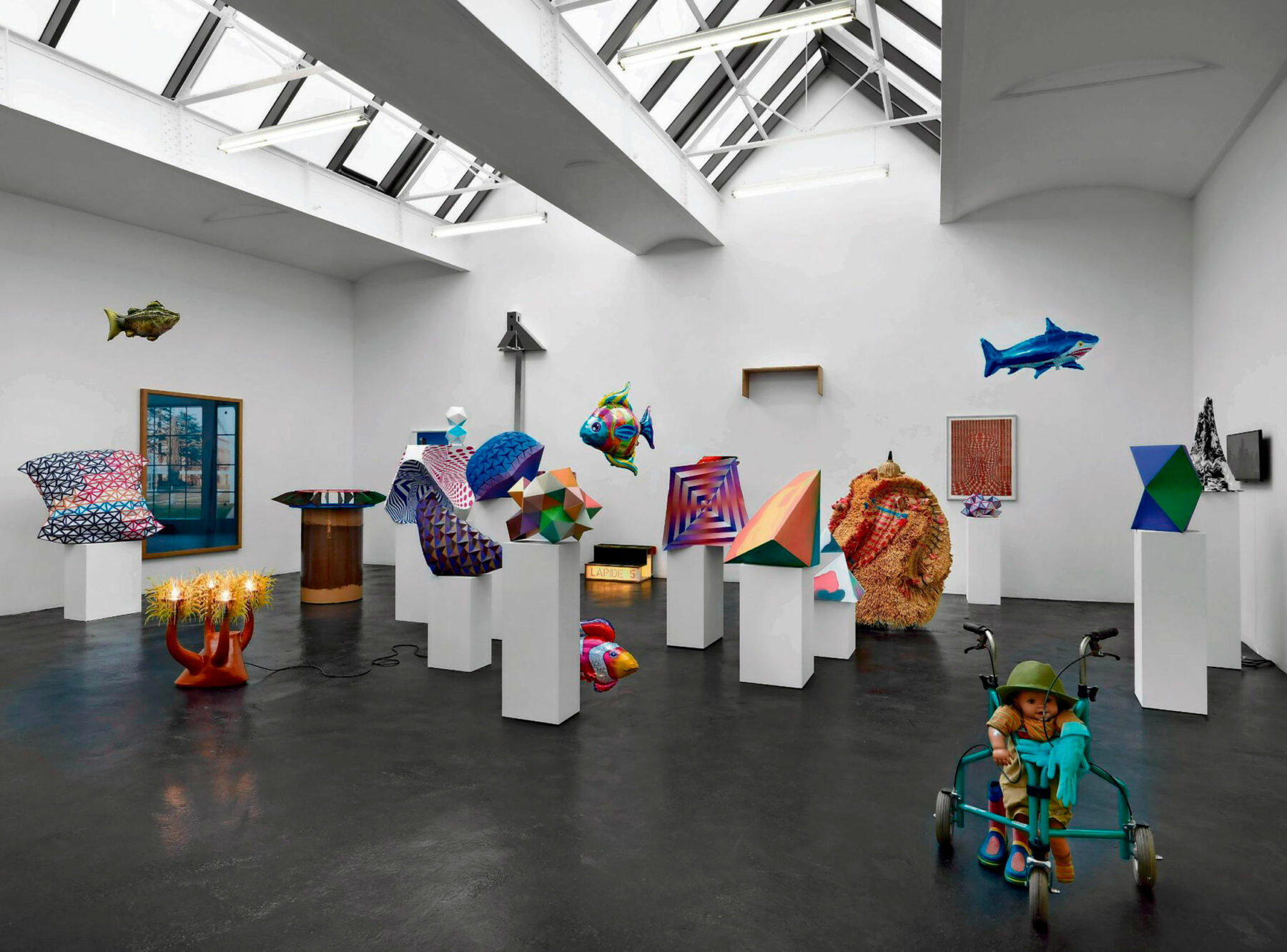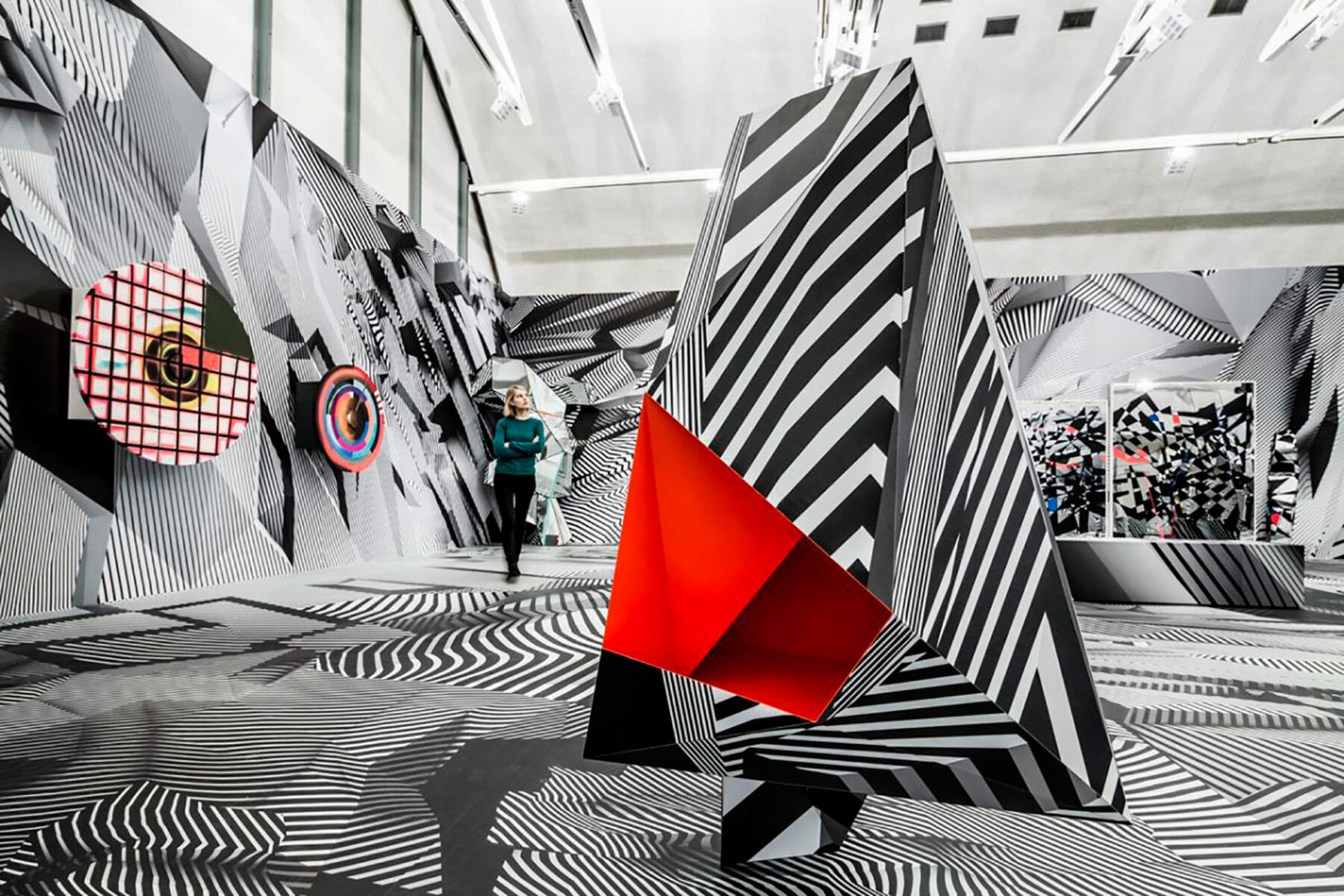Tobias Rehberger’s colorful, eye-catching work often has a witty dimension to it, which ranges from subtle to downright mischievous. His work has been exploring notions of interpretation, translation and implementation for years.
Rehberger’s Portrait Vases of the 1990s are a case in point: artists sent their favorite flowers to Rehberger, who placed them in vases he designed himself. He deliberately left the question of whether the flowers should be regarded as part of the sculpture unanswered. From behind a veneer of sculptural playfulness, Rehberger investigates where the boundaries of art lie and what possibilities they provide.
“For me, art is at its best when it succeeds in shaking up my status quo.”

“The catalyst for my work is often a problem, a deep-seated misunderstanding,” says Rehberger. “Not a concrete, mathematical problem, but a feeling of uncertainty or discomfort,” he adds. Art is often encountered in the sterile, white surroundings of a gallery or a museum. Here, the viewer has a clear frame of reference—everything on a pedestal or behind a cord is art, and should not be touched. Rehberger’s work challenges this simplification by placing art into new contexts. “I began using everyday objects. Why is something that looks like a sculpture a sculpture? An abstract art object in a white museum room also has a function. As with all good art we have to ask ourselves: in what context can something be called art?”
Rehberger, who comes from a town near Stuttgart, moved to Frankfurt in the early 1990s and studied under Thomas Bayrle and Martin Kippenberger at the Städelschule, a contemporary fine arts academy where today he teaches a class himself. His projects are realized at the docks on the east harbor, in a studio under the shadow of the European Central Bank. For one such project, a series of art-car sculptures initiated in 1999, he sent sketches of sports cars including a Porsche 911 and a McLaren F1 drawn from memory (without measurements) to a manufacturer in Thailand to have his designs realized. The result was a set of surreal, off-kilter interpretations aiming to agitate our Western sense of self and our persistent endeavor to connect with objects. “As the word itself implies, there is understanding in every misunderstanding; one which is turned on its head,” he explains. “This cognitive confusion is a pivotal part of the kind of art I am interested in. I need to undergo a process of misunderstanding myself before I can come to a new understanding. For me, art is at its best when it succeeds in shaking up my status quo.”

Rehberger’s more recent sculptures lead us over the German-Swiss border, and in doing so play with our expectations of the borders between art and design. His public project 24 Stops sees 24 sculptures positioned at intervals along the five-kilometer stretch between the Vitra Campus in Weil am Rhein and the Fondation Beyeler in Reihen. “I wanted to create something which metaphorically connected the two spaces, using different objects to explore ideas of functionality and utility,” he explains. “The sculptures along the Rehberger-Weg range from formally very abstract yet functional, to figurative in appearance yet nonfunctional.” Rehberger blurs these lines by offering a range of experiences; the view can be taken in through a telescope or from a high chair—and in the middle of the Rehberger-Weg a fountain promises cold showers on hot summer days.
“When exhibiting art in a public space it is crucial to both cater to the people who come specifically to see it, and to make sure that it’s not too invasive for the people who just happen upon it,” he says. For Rehberger, the perspective of the passer-by is a significant factor. “I’m generally interested in how we look at things, not so much in a spatial way, but cognitively. I find it’s less useful to think in morphological terms when we consider whether or not something is art. The way in which we look at it is far more important. What framework do we use to categorize it, and what can we hold up as a comparison?”


Modern art defines itself by its reluctance to fulfill a particular function. Yet Rehberger’s art often works on a functional level, and so it’s no surprise that he is sometimes mistaken for a designer. “I would class myself as more of an artist. My interest in things, and the issues and approaches which are important in my life, belong more to the art domain.” For a different exhibition, he built organically-formed yellow seats inviting gallery visitors to sit, drink, and smoke. The curator Nicolas Bourriaud coined the term “relational aesthetics,” to succinctly encapsulate artistic approaches that were popular in the 1990s. The focal point are people and their social interactions rather than the objects themselves. “Often in the process of creating something I see myself as a catalyst rather than as an artist ostentatiously expressing himself,” says Rehberger. “The process that goes into my art neither starts nor ends with me; I am essentially manipulating input to generate something new.”


“Often in the process of creating something I see myself as a catalyst rather than as an artist ostentatiously expressing himself.”





Tobias Rehberger’s abstract and colorful large-scale works
A selection of art installations exhibited across the world

From the simplicity of Tobias’s design process, visually striking pieces emerge that have a timeless novelty. His new series harks back to the vase portraits. It explores the notions of curiosity and mirroring through the framework of single objects, blurring the line between the familiar and the unfamiliar. He is organizing an exhibition for his 50th birthday where he makes an installation out of the presents he receives from friends and guests alike. Each person will be given something in return for their gift; artfully wrapped in origami, it must be destroyed to reveal what is inside. “This is exactly what I want my own art to do: to generate a confusion in the viewer, a changing of perspectives, a turning.”
The works of German sculptor and installation artist Tobias Rehberger vary between functional and abstract as he puts timeless and everyday objects into public contexts. His site-specific installations include the 2016 project 24 Stops: Rehberger-Weg, a five-kilometer long trail between the German Vitra Campus in Weil am Rhein and the Swiss Fondation Beyeler in Riehen that was commissioned by Vitra.
This article and video was co-created with Vitra. Together, we have portrayed many more inspiring individuals with a special feel for art and design. To learn more about Rehberger and his experiential body of work, head over to Vitra Magazine. For more international portraits, follow this link. Or, if you’re keen to explore more of Frankfurt, Rehberger’s hometown, delve into our city archive.
Text: Juliane Duft for FvF Productions
Photography: Ramon Haindl for FvF Productions
Video: FvF Productions







